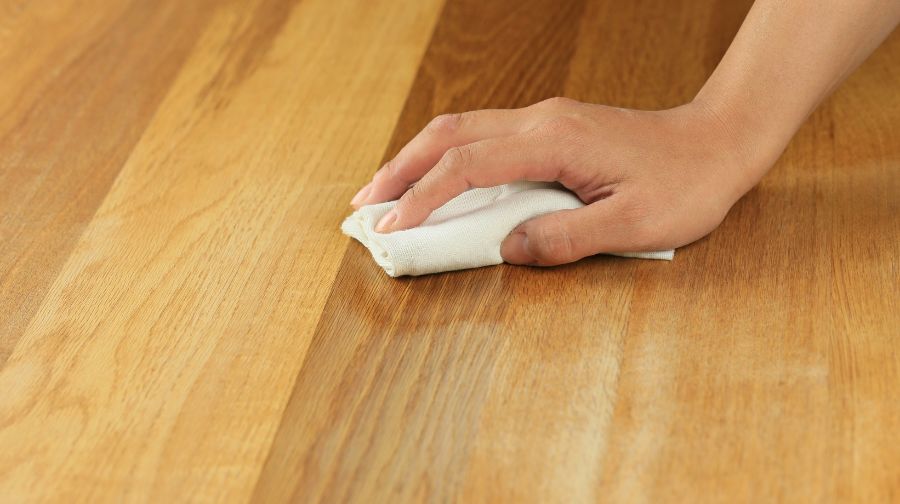
If you’ve ever spilled mineral oil on your wood floor or furniture, you know how difficult it can be to remove. If not cleaned up properly, the oil can seep deep into the wood and cause damage that is difficult to repair. In this blog post, we will discuss the best ways to remove mineral oil from wood. We’ll cover everything from using household items to hiring a professional cleaner. Let’s get started!
How To Remove Mineral Oil From Wood
In order to remove mineral oil from wood, you will need to use a product that is specifically designed for this purpose. There are a few different products on the market that can be used, but we recommend using naphtha, grain alcohol, odorless mineral spirits or citric solvent. These products are designed to remove mineral oil from wood surfaces without damaging the wood.
To use these products, simply apply one of them to the affected area by brushing it into the surface then let it sit for a few minutes. Once it has had time to work, use a clean cloth or paper towel to wipe away the cleaner and the mineral oil.
You may need to repeat this process a few times in order to completely remove all of the mineral oil from the wood then sand down a layer to have a fresh surface. However, if you follow these steps, you should be able to remove the mineral oil and restore your wood to its original condition.
If the mineral oil hasn’t dried you can remove it by cleaning the wood with a mild dish soap and water. Next, use a lint-free cloth to apply denatured alcohol to the surface of the wood. Finally, wipe the area dry with a clean towel.
What Is Mineral Oil And Why Is It So Difficult To Remove?
Mineral oil is a clear, odorless oil that is derived from petroleum. It is a popular choice for wood finishes because it is inexpensive and does not require frequent reapplication. However, mineral oil can be difficult to remove from surfaces and may require multiple attempts.
It is difficult to remove because it is a non-polar solvent, meaning that it does not dissolve in water. This means that mineral oil will not rinse away with soap and water. Instead, you will need to use a strong solvent such as paint thinner or mineral spirits.
You should also be aware that mineral oil can penetrate porous surfaces such as wood. This means that once it has soaked in, it can be difficult to remove. For this reason, it is important to act quickly if you spill mineral oil on your wood furniture.
If you do spill mineral oil on your wood furniture, the first step is to blot up the excess with a clean cloth. Then, you will need to apply a solvent to the affected area and scrub vigorously. You may need to repeat this process several times before the mineral oil is finally removed.
Once you have removed the mineral oil, you will need to clean the area with soap and water. This will remove any residual solvent that may be left behind. Finally, you should apply a fresh coat of finish to the area to protect it from future damage.
How Can You Tell If Your Wood Has Been Damaged By Mineral Oil?
You can tell if your wood has been damaged by mineral oil if it has become dull, lifeless, and/or brittle. The mineral oil has likely seeped into the wood and is preventing it from properly absorbing moisture. This can cause the wood to warp, crack, and/or splinter.
What Are The Best Ways To Remove Mineral Oil From Wood Furniture Or Floors?
Here is a list of the best ways to remove mineral oil from wood furniture or floors:
- Use mineral oil remover.
- Use a mild detergent or soap.
- Use white vinegar.
- Use lemon juice.
- Use baking soda.
- Use Naphtha
- Use Odorless Mineral Spirits
- Use Grain Alcohol
- Use Citric Solvent
Simple Trick for Dispensing Mineral Oil on Wood
Subscribe to WoodWorkers Guild Of America on YouTube



